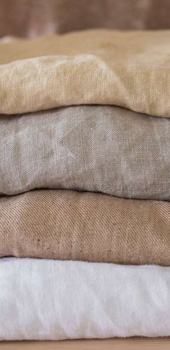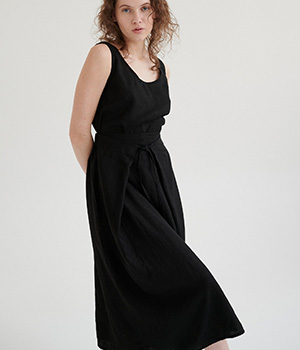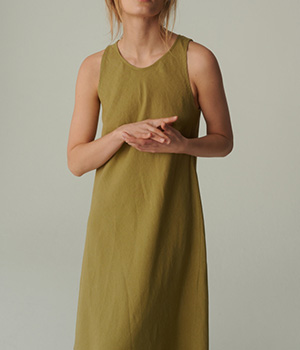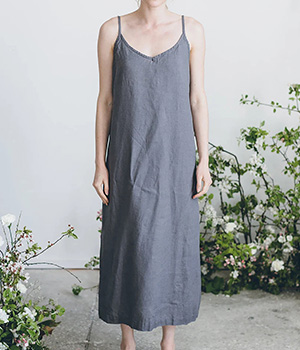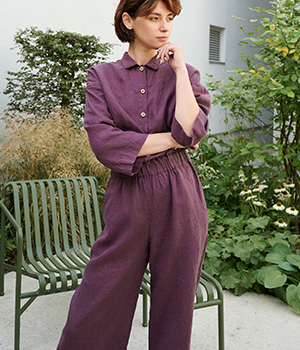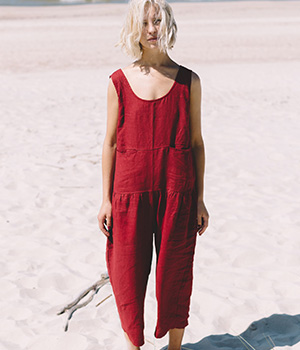What is a disadvantage of linen?
What Is a Disadvantage of Linen? A Manufacturer’s Insight for Fashion Brands.
Featured Snippet
Linen is a sustainable and stylish fabric, but its primary disadvantage lies in its tendency to wrinkle easily. This characteristic can affect its appearance in formal or commercial contexts, requiring additional care during manufacturing, shipping, and end-user maintenance.
Linen is a sustainable and stylish fabric, but its primary disadvantage lies in its tendency to wrinkle easily. This characteristic can affect its appearance in formal or commercial contexts, requiring additional care during manufacturing, shipping, and end-user maintenance.
Introduction – The Dual Nature of Linen
Linen, derived from the flax plant, is globally celebrated for its breathability, sustainability, and timeless appeal. At Linenwind, with over 20 years of experience in linen apparel manufacturing, we have seen this natural fabric rise in popularity among global fashion brands—from minimalist luxury lines to eco-conscious startups.
Yet while linen’s environmental benefits and aesthetic charm are undeniable, it's not without drawbacks. Understanding these limitations is crucial for fashion brand owners who are evaluating new materials or expanding their product lines. In this article, we’ll focus on linen’s most commonly cited disadvantage and how your brand can navigate it successfully with the right manufacturing strategy.
Linen’s Most Noted Disadvantage – Wrinkling Easily
The most frequently mentioned downside of linen is its proneness to wrinkles. Unlike cotton or synthetic blends, linen fibers have very low elasticity. As a result, linen garments tend to crease easily—especially when compressed during transportation or worn for extended periods.
This characteristic, while natural, can be problematic in several professional contexts:
Shipping & logistics: Linen garments can appear crumpled upon arrival, affecting the perceived quality of the product.
Retail display: Fashion retailers may need to steam or press linen garments before displaying them, adding operational complexity.
End-consumer experience: Customers may find linen high-maintenance due to frequent ironing, especially if they expect a crisp look.
Despite its relaxed charm, excessive wrinkling can limit linen’s use in more formal wear or premium product lines where visual neatness is key.

Other Common Challenges in Working with Linen
While wrinkling is the primary issue, other lesser-known disadvantages may also impact linen’s usability in fashion production:
1. Shrinkage After Washing
Linen has a natural tendency to shrink if not pre-treated correctly. Garments that are not pre-washed or pre-shrunk during manufacturing may result in customer dissatisfaction due to unexpected size changes after the first wash.
2. Color Fading
Linen, especially in darker tones, can fade more quickly than other fabrics after repeated washing. This is often a concern for fashion brands offering rich, pigmented collections meant to retain vibrancy.
3. Limited Elasticity
The fabric has almost no stretch. For form-fitting garments or those designed for high movement (e.g., sportswear, stretch-fit fashion), linen may not provide the desired comfort or flexibility without blending.
4. Rough Feel in Low-Quality Grades
Lower-grade linen can feel coarse against the skin, making it unsuitable for certain categories like underwear or children's apparel without additional softening processes.
Each of these factors highlights the importance of experienced processing and thoughtful design when incorporating linen into your fashion line.

Commercial Considerations – What Fashion Brands Must Know
Beyond the textile characteristics, linen's disadvantages manifest across the supply chain. Here’s what to keep in mind as a brand sourcing or retailing linen products:
Packaging Matters: Linen needs to be packed in a way that minimizes creasing. Using garment bags, tissue wrapping, or shipping on hangers may help preserve shape.
Retail Preparation: For retailers, linen often requires steaming before it’s shelf- or rack-ready—this adds time and operational cost.
Customer Education: Provide care instructions emphasizing how to deal with wrinkles and shrinkage. This can help prevent returns and maintain brand credibility.
Storage Conditions: Linen should be stored in cool, dry places to prevent mildew or moisture damage due to its absorbent nature.

How Manufacturers Like Linenwind Help Overcome These Disadvantages
Despite its challenges, linen remains an in-demand choice for eco-conscious and premium fashion brands. The key is partnering with the right manufacturer who knows how to mitigate these weaknesses through:
1. Pre-treatment & Finishing
We implement pre-washing, enzyme treatment, and anti-wrinkle finishes to stabilize size and reduce wrinkle formation.
2. Fabric Blending
When required, we offer custom fabric blends—such as linen-cotton or linen-viscose—to improve drape, softness, and elasticity while preserving the linen look.
3. Smart Garment Design
Designs that embrace natural folds—such as pleats or relaxed silhouettes—can align aesthetically with the natural texture of linen while avoiding the “sloppy” look.
4. Quality Packaging
We provide tailored packaging solutions for each linen item to ensure that your garments arrive in retail-ready condition, even after long-distance shipping.
By taking these proactive steps, brands can turn linen’s potential weaknesses into part of its narrative—“perfectly imperfect,” artisanal, and natural.

Why Linen Still Stands Out in Modern Fashion.
Even with its disadvantages, linen’s advantages far outweigh the downsides for many brands. Its breathability, natural cooling effect, biodegradability, and timeless aesthetic have made it a core component of spring/summer collections across global fashion houses.
Leading brands such as COS, Zara, Everlane, and Eileen Fisher continue to release linen lines year after year, showing that with proper design and treatment, linen can hold its own against more convenient synthetic fabrics.
Consumers are increasingly willing to trade convenience for authenticity, sustainability, and skin-friendly comfort—values that linen inherently offers.

Conclusion – Rethinking Linen’s Disadvantage as a Strategic Feature
Yes, linen wrinkles. But in today’s sustainability-driven fashion landscape, its flaws can be reframed as features—signs of a natural, unprocessed, and genuine product. For fashion brands that partner with expert manufacturers like Linenwind, these “imperfections” can be managed, controlled, and even celebrated.
Whether you’re designing relaxed resort wear, elevated basics, or limited-edition eco-collections, linen can be your statement fabric—with the right strategy in place.
✅ Let's Build Your Linen Collection
At Linenwind, we specialize in helping fashion brands launch and scale linen apparel lines with expertise and quality. From anti-wrinkle finishing to custom design services, we deliver fully integrated OEM/ODM support.
📩 Contact us today to explore your options in sustainable linen production.




